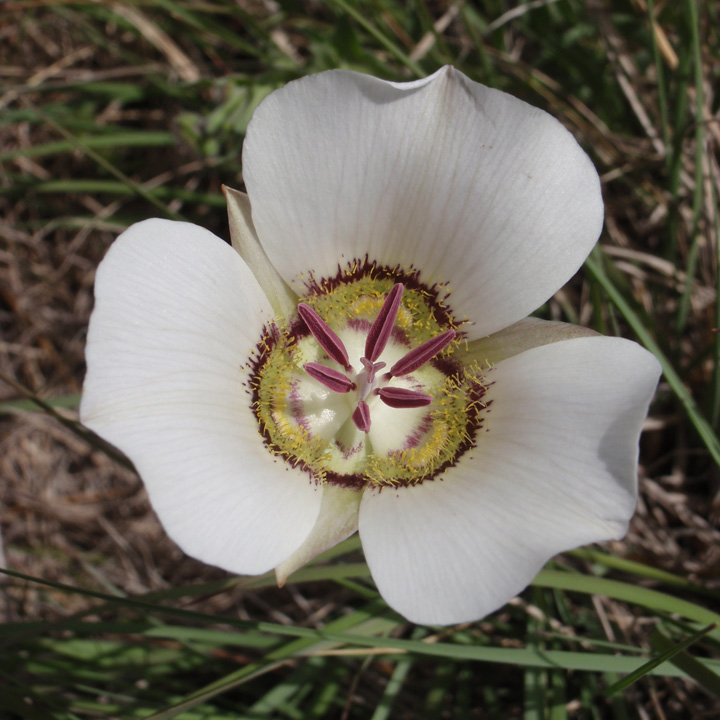|
Family: Liliaceae |
Herbs, perennial, sometimes from bulbs; bulb coat membranous or fibrous-reticulate. Stems scapelike or leafy, simple or branched, glabrous, often glaucous; bulblets sometimes borne in leaf axils. Leaves sessile; basal persistent or withering by flowering, solitary, blade base sometimes attenuate and petiolelike; cauline 0-several, sometimes proximalmost appearing as basal, reduced. Inflorescences monochasiate or ± umbellate, 1-many-flowered, bracteate. Flowers: perianth globose to broadly campanulate; sepals 3, distinct, ovate to lanceolate, usually petaloid and glabrous; petals 3, distinct, usually longer and broader than sepals, sometimes clawed, usually hairy adaxially, bearing adaxial gland near base, often spotted to ± patterned; filaments widened at base; anthers usually basifixed or pseudobasifixed, linear to oblong; ovary superior; style absent; stigmas 3. Fruits capsular, 3-locular, 3-angled or -winged, linear, oblong, or globular, dehiscence septicidal. Seeds many, in 2 rows per locule, irregular or flat, coat usually hexagonally reticulate. Many species of Calochortus are in cultivation. Bulbs of some species were eaten by Native Americans. Petal shape, gland shape, and pubescence are exceedingly variable in many taxa but often are important in identifying species. As part of a phylogenetic analysis of relationships within the Liliales, T. B. Patterson (1998) studied variation in noncoding cpDNA sequences throughout Calochortus. He resolved seven main clades that are geographically and ecologically strongly cohesive, including the mariposas of dry grasslands and semideserts, the star-tulips of wet meadows, the cat´s ears of montane woodlands, and the fairy lanterns of closed forests. Patterson suggested that this pattern of relationships is the result of highly localized speciation within the genus.
|


